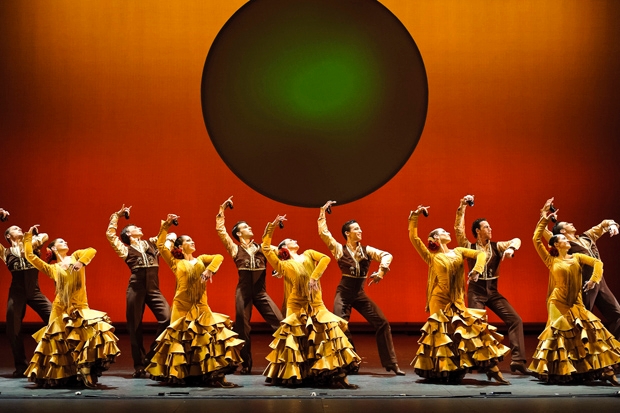Funny how things turn upside-down with time. A work of contemporary dance that made an iconoclastic splash decades ago is revived today, exactly as it was, as if it were a museum piece. Yet more long-standing dance traditions — such as flamenco and circus — are constantly being remodelled.
The contemporary work is that legendary 1987 invention of Eurocrash by the Belgian dance-inventor Wim Vandekeybus, What the Body Does Not Remember. The icons it trashed included rules about the place of grace in dancing, even the place of knowledge — Vandekeybus was a photographer and experimental theatre performer when he made this, his first dance piece, never bettered. Those icons have had boots in their faces for a generation since, so does this piece stand up? Not just as a piece of history but as something fresh and alive? Oh, yes.
In 1987 it was the roughness and violence that struck me, bricks being heaved around the stage, stomping sequences as bodies twitched to get out of the way of big boots, and the air of uneasy sexual friction between men and women. Now I noticed more the tight, witty ensemble and satisfying musicality. Vandekeybus’s observations of physical rhythm, the timing of reflex and human reactions, and the exploitation of how much more rule-breaking you can get away with if you structure and shape your rebellion — these are rules of good dance, and it is invigorating to see them prioritised so brightly.
In tough street clothes and Doc Martens (practically ubiquitous in Euro-dance ever since), the five men and four women erupt with a speed and attack that would be dangerous if it weren’t precisely gauged. They spring at each other, grope, slap and flinch, duck and dive. There is also a wonderfully funny sequence in which the dancers filch towels off each other in a kind of pickpocket relay, which makes up for the bit that has dated, the rather contrived walking on bricks which invested the piece’s reputation with supposed political messages. I think Pina Bausch always did that better.
I’m not sure even Bausch ever had more creatively energising musical collaborators, though. ICTUS, the contemporary ensemble of Thierry De Mey and Peter Vermeersch, provides the terrific musical motor for Vandekeybus’s choreographic train. It’s a visual draw in itself on split levels, with Francis Gahide’s dazzle-in-the-dark lighting gleaming off old-fangled brass, piano and clarinets, all used in new-fangled ways. Percussion never came in more colours or rhythmic textures on a dance stage, rarely so well fused with the split-second physicality of movement. The troupe is on UK tour at the moment — catch this heart-starter.
The mutual inextricability of music and dance is the very heart of flamenco but rarely gets its due in Sadler’s Wells annual flamenco festival. Twelve festivals on, punters still don’t get any help understanding the vivid lyrics of the songs that provide the dancers with their haughty, mysterious vocabulary, while the Wells’s amplification system spews out ever more ear-piercing decibels. The dial must have reached 11 for the opening gala, especially with the abrasive shout-singing of Rocío Bazán, who could open a tin with her voice, and we can’t even tell why she’s yelling. Unlovely stuff, a travesty of the intensity of emotion that live flamenco music can deliver.
Dancewise, too, there was a problem, the new young male star Jesús Carmona being off sick. As a result we had double helpings of the hammy veteran Antonio Canales, parading a stage ego not a whit diminished in line with his dancing. His choreography provided better value with his charming female trio, three flamenco graces in pale blue dresses with huge frilly trains led by the delicious Karime Amaya, who deserves more carefully curated surroundings to show her star quality. I feel something’s drifting here, art-wise.
Charm there is aplenty in the Canadian circus-theatre troupe Cirque Éloize. Cirkopolis projects a fine factory setting for traditional skills performed by a troupe of office workers in grey suits, hats, even high heels. With deft choreographic input by Dave St-Pierre the individuals come over as humans, rather than the outsize acrobats of the bigger sibling Cirque du Soleil.
A girl in a red dress with her hoop performs a dream-like sequence of circling, floating grace, and the fact that Léa Toran Jenner looks like someone who enjoys a bun on her break is a captivating disguise for her skill. True, the three women on the 12-strong team are obligatory office bimbos but then they shine more arrestingly than the men as acrobats, particularly the tiny tornado on the Chinese pole, Maude Arseneault. The ending, with everyone jumping off filing cabinets on to seesaws and bouncing each other into the ceiling, is utterly cathartic.






Comments